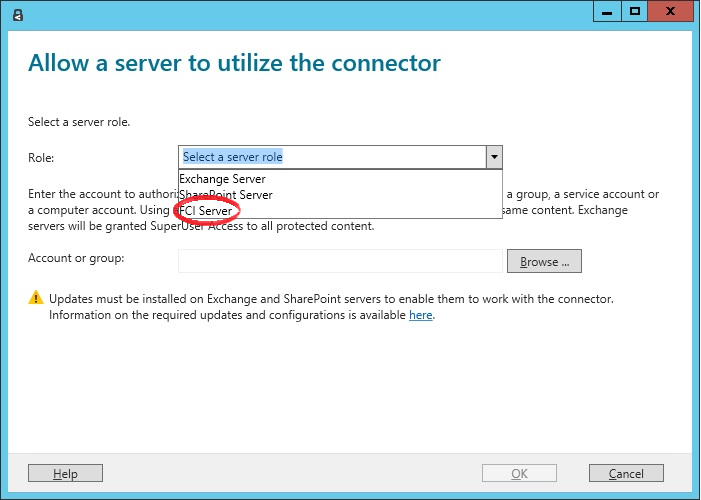Windows Server FCI (File Classification Infrastructure) now supports Azure RMS
Note: This is a cross blog post from our TechNet RMS Blog. (https://blogs.technet.com/b/rms/)
Hi everybody,
You asked so we got on it. Today we’re sharing with you the recently updated Azure RMS connector. It’s now natively enabled with Windows Server File Classification Infrastructure support. Enrique Saggese explains this new feature below.
Reminders: Follow us on twitter (@TheRMSGuy) and join in our RMS peer community at www.yammer.com/AskIPTeam.
Cheers,
Dan on behalf of the Rights Management team
-----------------------------------
Many of you have looked at the RMS connector as a means to integrate Windows Azure RMS with your on-premises installations of Exchange and SharePoint. Several of you have asked to enable our other RMS-enlightened server workload, the FCI functionality in Windows Server. We happy to say it's now ready for your use.
As you would expect, it’s not a radical user interface change:
For those of you not familiar with FCI, FCI refers to the File Classification Infrastructure, a capability in Windows Server-based File Servers using the File Server Resource Manager feature which enables the server to scan local files and assess their content to determine if they contain sensitive data, and if they do classify them accordingly by tagging them with classification properties you define. Once files are classified, FCI can also automatically take action on these files, such as applying adequate RMS protection to the files to prevent them from leaking beyond their intended audience. All this happens in the blink of an eye without the users having to take action. The classification policies are fully configurable and highly extensible so you can create policies that match your organization’s needs. In addition to preventing potential data leakage from unauthorized and authorized users, this service can even help with reducing the risk of leakage from your network’s administrators, since you can configure policies that don’t grant content access to your file server’s administrators and other such roles.
Learn more about FCI from the FCI team’s blog.
The connector you had was already FCI-aware. Until now we had been in preview with a few customers so we hid it from the rest of you. It's now configured to show up as an authorized workload. Don't worry, we did this via a configuration change in the Azure RMS service; no new code was silently deployed.
If you want try this new workload, just follow the steps indicated in the RMS connector documentation for configuring the connector for FCI servers and then configure your Windows Server 2012 or Windows Server 2012 R2 file servers to use RMS to protect the files you classify. Once that is done your file servers will begin automatically protecting files with Azure RMS based on the policies you define.
We hope you will be able to make good use of this feature to broaden protection of documents in your organization’s file servers and to drive your organization’s risk of data leakage further down, which is what RMS is all about.
If you have any questions, please join us to discuss on www.yammer.com/AskIPTeam. I (Enrique) and the rest of our team will be there to help.
- Enrique
